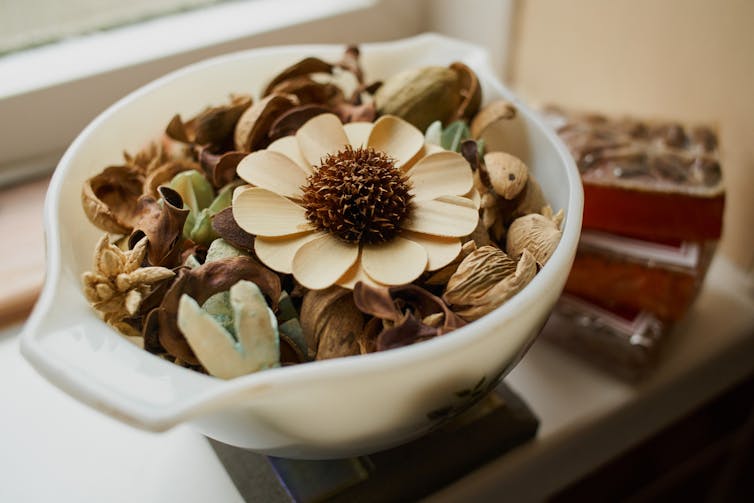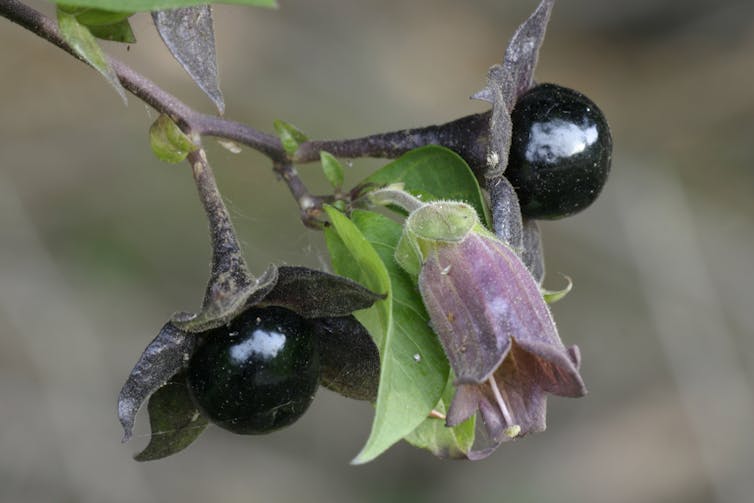Is the gruesome fun in Netflix's 'Wednesday' realistic? What science says about getting eaten by pir
From eating potpourri to blast fishing, Wednesday Addams and her friends and family get involved in a number of grisly hijinks. But could they happen in real life?

Editor’s note: This article contains minor spoilers for the Netflix series “Wednesday.”
The popular Netflix series “Wednesday” chronicles the adventures of the Addams family’s teen daughter. After her parents send her to Nevermore Academy, a school for “outcasts,” Wednesday Addams, played by Jenna Ortega, is pulled into a perplexing murder mystery. The show is infused with elements of the supernatural but also contains scenes that may leave viewers wondering, “Could that really happen in real life?”
I’m a professor of pharmacology and toxicology at the Indiana University School of Medicine, where we study the effects of drugs and poisons on the body. Some of the scenes in “Wednesday” raise intriguing questions about chemical and biological hazards that inspired me to investigate what science has to say about them.
Piranhas in the pool
One of the most memorable scenes involves Wednesday exacting revenge on her brother’s bullies by dumping hungry piranhas in their swimming pool. Most of the swimmers escape except for one unlucky guy who gets a wee bit chewed up. What is the likelihood that piranhas would attack someone in a pool?
Piranhas are freshwater fish indigenous to South American rivers and lakes. Their reputation as a ferocious carnivore that can reduce their prey to bones in seconds was popularized by Teddy Roosevelt following his trip to the Amazon. However, the fish he witnessed eating a cow were purposefully starved before the display.
In reality, not all piranhas are carnivores, and the rare attack on humans is typically limited to a single bite. Gregory A. Lewbart, a professor of aquatic, wildlife and zoological medicine at North Carolina State University, once swam with piranhas in the Ecuadorian Amazon, as many people do every day without incident. “Fatal attacks are either extremely rare or have not occurred,” Lewbart told me. “It sounds like the only humans consumed by piranhas are people who already died from drowning.”
Even if Wednesday were able to procure a carnivorous species deprived of food, there’s still the problem of being dumped into a chlorinated pool. Lewbart explained that the chlorine would cause rapid damage to the fish’s gills and reduce the ability of their blood to carry oxygen, leading to death. These piranhas would be in shock and unlikely to swim across the length of a pool to mount an unprovoked attack. “I can almost guarantee a piranha or any fish dumped into a swimming pool would not be thinking about feeding,” Lewbart told me.
Snacking on potpourri
During a family therapy session, Wednesday’s brother Pugsley, played by Isaac Ordonez, mistakes a bowl of potpourri for candy and begins to devour it. Potpourri is a mixture of dried flower petals, herbs and spices used to fragrance a room. What would happen if someone ate it?
Potpourri is generally considered to be nontoxic. However, essential oils are commonly added to potpourri to enhance and extend its smell. These highly concentrated plant extracts can potentially cause a skin rash or irritation to the eyes, mouth and throat.

While ingesting a small amount of potpourri is probably not too dangerous for humans, veterinarians have issued warnings for dogs and cats, as excessive amounts could lead to gastrointestinal problems or adverse liver effects. Beyond a sensitivity to the essential oils, the contents of potpourri can also pose a choking hazard to your pet.
Blast fishing
In one scene, the Addams kids go fishing with Pugsley’s “favorite bait”: grenades. After they toss a grenade into the pond, the explosion produces a ready supply of dead fish for the taking. To learn more about “blast fishing,” I consulted with Rachel Lance, who studies explosives and blast trauma at Duke University.
“The grenade method may technically work,” Lance told me. “Grenades almost certainly could cause swim bladder trauma as a result of the explosive shock wave, which would bring the unfortunate fish to the surface belly up.”
Lance added that fish are quite blast-resistant, so a powerful explosive such as an M-80 firecracker, dynamite or homemade bomb would be needed. And even with large explosions, the technique carries far more risk than it’s worth. “Jacques Cousteau dove underwater after a bout of blast fishing, and he found it to be sadly ineffective, with 90% of the fish that had been killed sinking to the bottom where they could not be easily collected, and a meager 10% rising to the top,” recalled Lance.
Given the danger of explosives, not to mention their inefficiency and collateral damage to the ecosystem, blast fishing is illegal in many parts of the world.
Nightshade poisoning
Nightshade poisoning was deduced as the cause of death for one of the characters based on foaming saliva, dilated pupils, mental confusion and bluish skin. What is nightshade and can it be used as a poison?
Nightshades include many different varieties of plants, some of which are diet staples for many, like tomatoes, potatoes and peppers. Other varieties are to be avoided, such as the aptly named deadly nightshade (Atropa belladonna). Deadly nightshade is a shrub with dark green leaves adorned with purple, bell-shaped flowers and dark purple berries. But don’t let the beauty of this belladonna fool you; ingest any part of this plant, especially the sweet-tasting berries, and it could be your last meal.

People have been exploiting the poisonous properties of deadly nightshade since Roman times, but the plant has medicinal and cosmetic uses as well. The berries are rich in atropine, a chemical that enlarges the pupils by relaxing the muscles in the eye. This became a fad among women during the Renaissance and can be used by ophthalmologists to dilate the pupil for an eye exam. Atropine is also included in the World Health Organization’s Essential Medicines list to reduce saliva production in surgeries and treat some poisonings and eye conditions.
Symptoms of deadly nightshade poisoning include rapid heartbeat, blurred vision, vomiting, hallucinations, seizures and coma. These symptoms take at least 15 minutes to appear; they are not as immediate as depicted in “Wednesday.” And while some victims may have blue-tinged skin because of low oxygen levels in the blood, it is not a hallmark of deadly nightshade poisoning. Other conditions, including silver poisoning, can also cause blue skin.
“Wednesday” is the latest Hollywood hit that exaggerates what’s possible to advance a good story. Even if a show doesn’t quite get the science right, investigating what’s true can be educational.
Bill Sullivan does not work for, consult, own shares in or receive funding from any company or organization that would benefit from this article, and has disclosed no relevant affiliations beyond their academic appointment.
Read These Next
RFK Jr. wants to scrutinize the vaccine schedule – but its safety record is already decades long
Federal officials are questioning the safety of the vaccine series children receive. Here’s the story…
Understanding climate change in America: Skepticism, dogmatism and personal experience
Real skeptics study the evidence and ask questions, rather than taking political dogma on faith. Experiencing…
Rest is essential during the holidays, but it may mean getting active, not crashing on the couch
Unwinding can be hard during the holidays for many reasons. Building in time to recharge through active…






